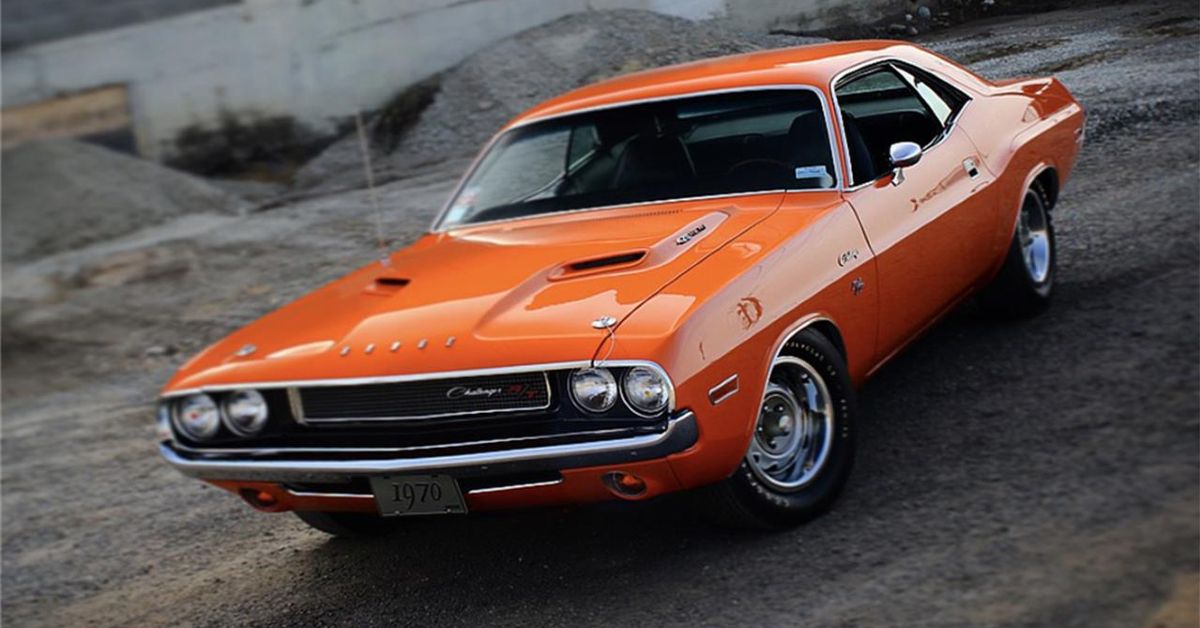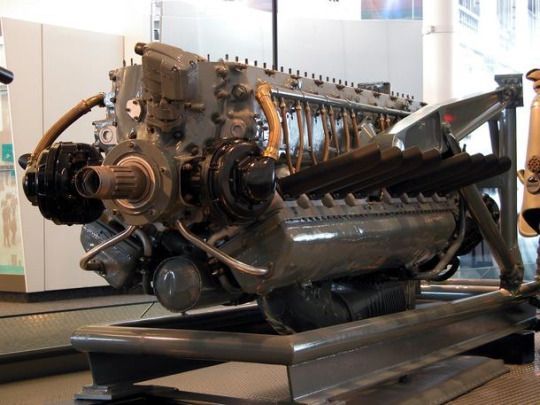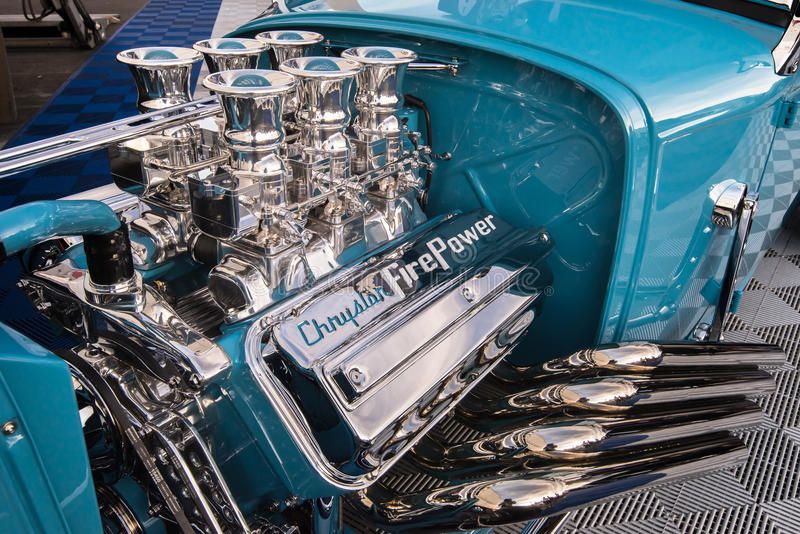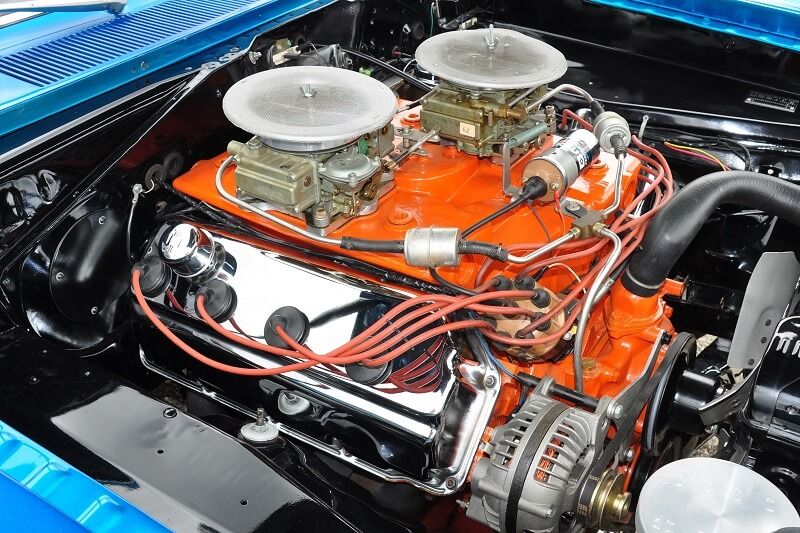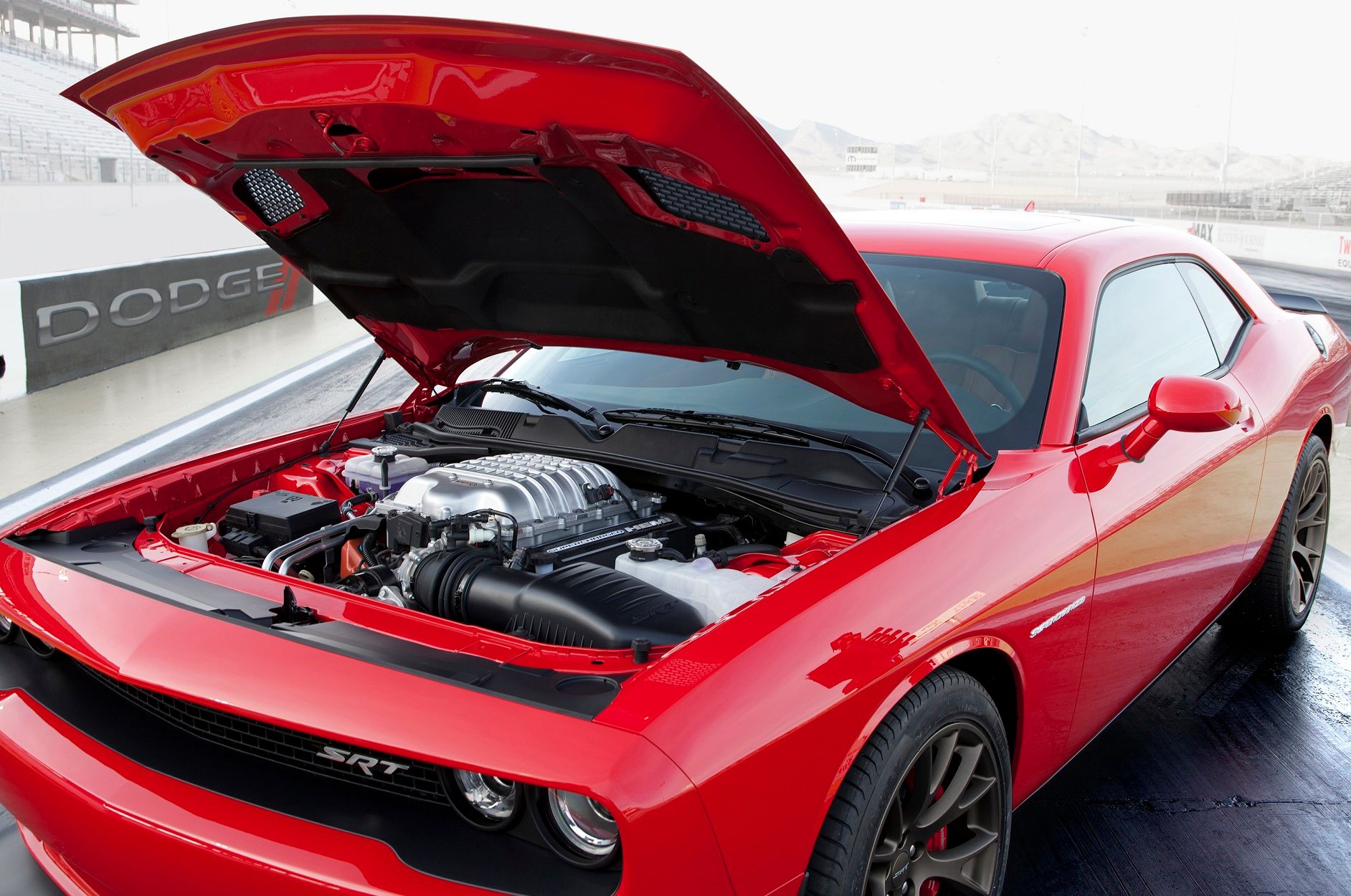The Hemi design is pretty simple: the shape of the cylinder head’s combustion chamber is half of a sphere—according to TruckTrend.com, you can picture a grapefruit cut down the middle and hollowed out. A spark plug is placed in the top-center, which shortens the burn distance between the air/fuel mixture.
On overhead-valve engines, a large intake and exhaust valve is fitted on either side, to enhance air intake and exhaust flow in and out of the combustion chamber. Flattop pistons couldn’t produce sufficient compression due to the hemisphere shape, so domed pistons were used. And what you have as a result is called a “hemispherical combustion chamber.”
Every car buff knows what a Hemi engine is, but not everyone knows where it came from. Yes, it’s most famous as the big-block muscle car engine used on Chrysler-produced vehicles during the ‘60s and ‘70s, and then again in the 2000s. But the origins of the Hemi engine are much more interesting, and the engine didn’t even start out inside of a car!
Origin Of The “Hemispherical Combustion Chamber” And Chrysler Prototypes
The earliest Hemi engines were actually first used in cars in 1905, by Belgian carmaker Pipe. They had a four-cylinder Hemi, and the Fiat 130HP Grand Prix race car used it on the track in 1907. Other manufacturers followed suit with more powerful combustion-chamber tech. Cost issues led to a drop-off of production until after World War II.
During WWII, Hemis were used for military and aeronautic use, most notably in the M47 Patton tank (the V12 AV-1790-5B engine), and the massive 2,220ci V16 XIV-2220 (pictured above) used in the P-47 Republic Thunderbolt fighter aircraft. Rated at 2,500 hp and surpassing 500 mph on test flights, the XIV-2220 was a sign of things to come in the muscle car world, following WWII!
First-Generation Chrysler "FirePower" Engine
The first-generation Hemi engine used for cars hit the streets in 1951 with the first overhead-valve V8 production from Chrysler. This engine replaced the flat-head. The 331ci “FirePower” engine was cast-iron, and it was rated at 180 hp. It was used from 1951 to 1958.
Different inline-six and V8 Hemi versions were made by some of Chrysler’s divisions, including the following: Chrysler and Imperial “FirePower” had 331, 354, and 392ci variants. Desoto had the “Fire Dome,” with 276, 291, 330, 341, and 345ci variants. And Dodge used the “Red Ram” (241, 270, 315, 325ci variants) and the Power Giant (354ci) intended for heavy trucks.
Second-Generation Chrysler "426 Hemi" Engine
It wasn’t until the legendary 426 Hemi came out in 1964 that things really started to click for Chrysler and their muscle cars. This legendary engine would completely change the game. To many, the 426 is still the definition of a Hemi engine. Some call it the “Elephant Engine” and it was the first hemispherical combustion chamber head design to wear the HEMI emblem on it.
The big-block 426ci was originally built for NASCAR in the 1964 Plymouth Belvedere. The new Hemi took the top three spots at the Daytona 500 that year, which led to a Hemi-ban in 1965. Some Dodge Darts, Coronets, and Plymouth Fury models were sold to the public, but competitors said it was an unfair power advantage because not enough street cars were using it.
A milder street configuration hit the market in 1966, with a toned down compression ratio (10.25:1 as opposed to the race version’s 12.5:1), a replacement camshaft, milder intake and exhaust manifolds, and more. It still had an amazing 425 hp, though!
Some of the models using the 426 Hemi: ’70-‘71 Dodge Challenger, ’66-’71 Charger, ’69 Charger Daytona, ’66-’70 Coronet. The 1970 Plymouth Fury GT, the ’68-’71 Road Runner, the ’70 Superbird. This is not by any means an exhaustive list. Street car sales of 426 Hemi-equipped engines ended in 1971.
Third-Generation Chrysler "New HEMI" Engine
The Hemi engine was finally continued in the new millennium, starting in 2003 with the “New HEMI” engine, now in all caps to denote its epic power. The third-gen Hemi engine is maintained for everyday cars, as opposed to the first and second gen race cars and high-end performance cars.
For instance, Dodge released a 5.7-liter V8 Hemi for the 2003 Ram 1500, 2500, and 3500. The modern combustion chamber of the engine was modified to have a near-perfect hemispherical design, two spark plugs, and advancements in fuel injection and spark, which improved efficacy compared to the second-gen model. Horsepower ranged from mid- to high-300s.
A 6.1-liter Hemi became available in 2005, using Chrysler’s SRT (Street and Racing Technology) division. Cars such as the Dodge Challenger, Charger, and Magnum all used this incredibly powerful engine, which was booted to 425-hp and 420-lb-ft of torque engine for the SRT8 versions.
A 392ci (392 Hemi) was built with 6.4-liter displacement in 2007, with 525 hp and 510 lb-ft of torque. These engines were released in-crate with the 2011 Dodge Challenger SRT, Chrysler 300, Dodge Charger, and Jeep Grand Cherokee.
Finally, the 6.2-liter Hellcat engine, the most aggressive Hemi ever made, was produced in 2015. The all-new 6.2-liter engine was available on the Dodge Challenger and Charger, with a massive 707 hp and 650 lb-ft of torque—both of which can be raised with some tuning.

